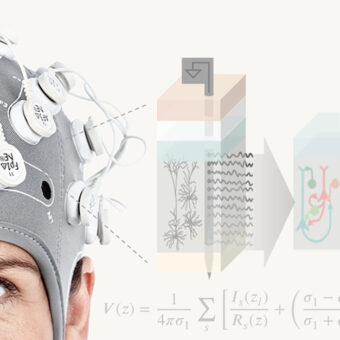We all know that we are extremely social animals but just how far does this go? Many believe that human intelligence evolved to solve our complex social problems rather than ecological problems as was previously assumed. Robin Dunbar lays this out in his 1998 paper “The Social Brain Hypothesis”. You may have heard of Dunbar’s Number, which refers to the number of people we can reasonably maintain relationships with, and it is directly related to our social processing power. In fact the number of individuals in various primates social groups and how this correlates to the size of their respective neocortex is in part what drove this theory.
It may however go even further than this. This social aspect may not just be the application of raw processing power to complex social interactions but instead a suite of dedicated cognitive tools.
Our brains are constantly exchanging information, collaborating and working with others, and most of our decisions are made after taking on others perspectives and trying to find the optimal solution. In 2005 Tomasello wrote about our “shared intentionality”, a unique cognitive representation for sharing psychological states with others. More recently Frith and Gallotti took the idea further in describing what they call “we-mode” where individuals engaged in interactive behaviour have access to more information on what actions may be available than either individuals or observers. This is a very profound idea, it says that we have cognitive abilities that only come “online” in interactive social situations, that they are literally not available to us when alone or simply observing others interact.
Laurie Santos gives a very interesting talk on some aspects of this and what makes us uniquely human as part of the Edge HeadCon series. She comes at this from the point of view of comparative cognition and describes some very nice and surprising experimental results around the types of models infants and children have in their heads regarding what other people think. The surprising thing is that some of this is low-level stuff that we would not consider to be part of our conscious process. Much like low level visual processing of patterns and shapes. They have shown in some primates that only the low level mechanisms exist and that they act based on simple tracking of visual attention. The monkey knows what you have seen and can act accordingly but if you look away and miss something the monkey can no longer make any assumptions, it has no high level model to fall back on. It’s tracking system has been reset.
In humans we possibly have several of these mechanisms working below other higher level processes and all below conscious awareness.
When we are out in the world our brains are constantly throwing up models of what others are thinking or planning, what this means for us and what this may mean for others around us. If it turns out that part of this process is essentially automatic, that they “need not be conscious and deliberated” as Frith puts it, it will have profound implications for our understanding of ourselves. Simply being aware of how these processes work may help us mitigate some of our own biases but when these mechanisms break down, as has been speculated in the case of autism, this understanding will be far more important.
As Gallotti puts it, and Silicon Valley has clearly seen, the mind is “social all the way through”, this is who we are.



